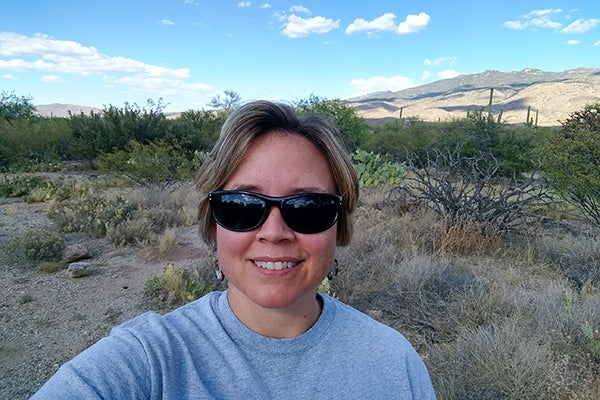ECU students gain real-world experience interpreting data on seafloor earthquakes
Dr. Meg Blome, teaching assistant professor of geological sciences at East Carolina University, regularly teaches more than 50 students in an introductory oceanography course, but only half of those students take the optional lab.
Blome wanted to give every student — not just those taking the lab — hands-on experience. So, in 2020, she applied for and was awarded a $3,000 National Science Foundation Ocean Observatories Initiative Fellowship that allowed her to enhance the class with interactive activities.
First, Blome wanted to find out what her students already knew about earthquake intensity, depth and frequency. Using the OOI Data Labs, she incorporated two tectonics-related data explorations into her class that pinpoint frequency and causes of seafloor earthquakes: Seismic Features at a Seamount and Plate Boundary Features.
“I think the students enjoyed doing something other than lecture for a portion of the class period,” Blome said.
Her goals for the students included observing how a range of oceanography data is presented on a single map, discovering and dispelling misunderstandings regarding frequency and causes of earthquakes, and learning how to interpret patterns and make predictions based on data.
She noted that most students entered the class with a misconception about how often earthquakes occur — they believed they occur less frequently than they do. However, Blome said students had a good understanding of how earthquakes may occur and how they are categorized by the amount of damage they cause.
As the activity progressed, Blome noticed students gained confidence in interpreting and predicting what the data represented.
“I think they were both surprised by and motivated by their new ability to interpret the data. That confidence change was certainly inspiring to me,” she said.
“I learned that by observing underwater earthquake activity we can make a good judgment of where the tectonic plates meet,” said Brandon Burke, who took Blome’s class in spring 2020. “My favorite part of these activities was seeing plate tectonics in action.”
When classes shifted online during the coronavirus lockdown in spring 2020, Blome learned that the activity during in-person class was more productive than online.
“I found that engagement dropped between the activity we did as a class together versus the activity that became an at-home, individual assignment,” Blome said.
Blome’s fellowship concluded this spring, but she intends to teach the face-to-face course in a similar way in 2022 and will continue to integrate online interactions.
“Part of the OOI Fellowship involved incorporating some of these digital data explorations into my online oceanography lab course, and I intend to continue modifying existing lab assignments by adding more interaction with OOI data in the upcoming semesters,” she said.
Related:
“Enhancing Lectures with Interactive Data Exploration,” a blog written by Blome for the Ocean Data Labs website, describing her experience incorporating in-class data activities.
